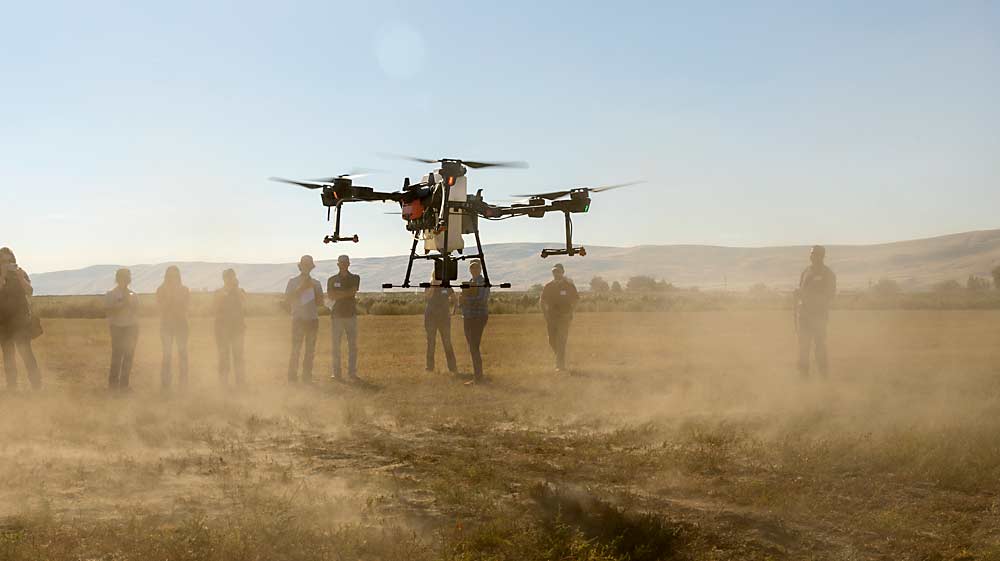
At Washington State University, researchers are testing new ways to spray vineyards, from drones to zero-drift and zero-residue technologies, and they shared their latest findings with growers during a field day at Washington State University’s Prosser research vineyard in August.
Engineer and associate professor Lav Khot demonstrated the newest technology: a spray drone. With a 20-liter payload and 12 minutes of flying time per battery, it’s not a tool to replace a regular airblast sprayer, he said.
“It’s more a tool for targeted, precision management,” he said, such as hitting edge rows harboring a mite outbreak or targeting nutrient management. He and his colleagues are still exploring the benefits such a technology could offer grape growers.
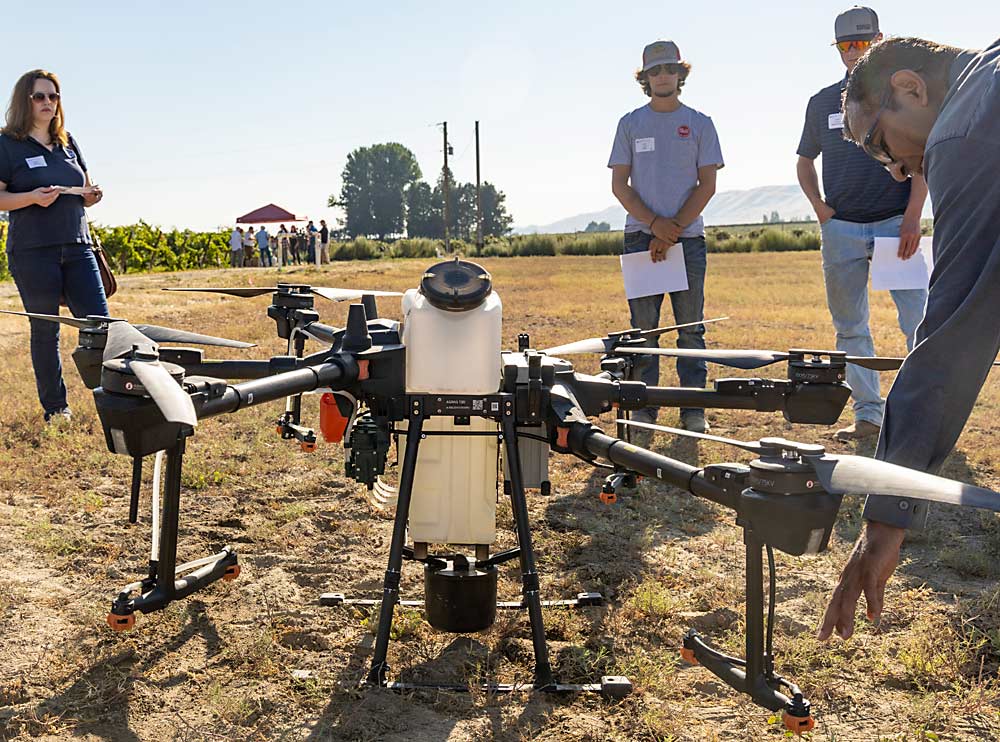
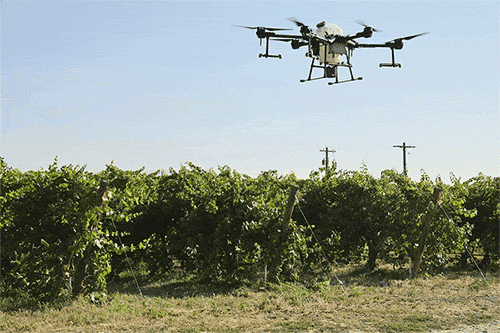
For now, it’s clear the technology was designed for row crops. Water-sensitive paper placed inside the canopy during the demonstration showed almost no discernable deposition, while the paper on the vineyard floor got plenty of coverage. One of Khot’s goals is to figure out how to optimize the drone, purchased with a grant from the U.S. Department of Agriculture, for use in orchards and vineyards.
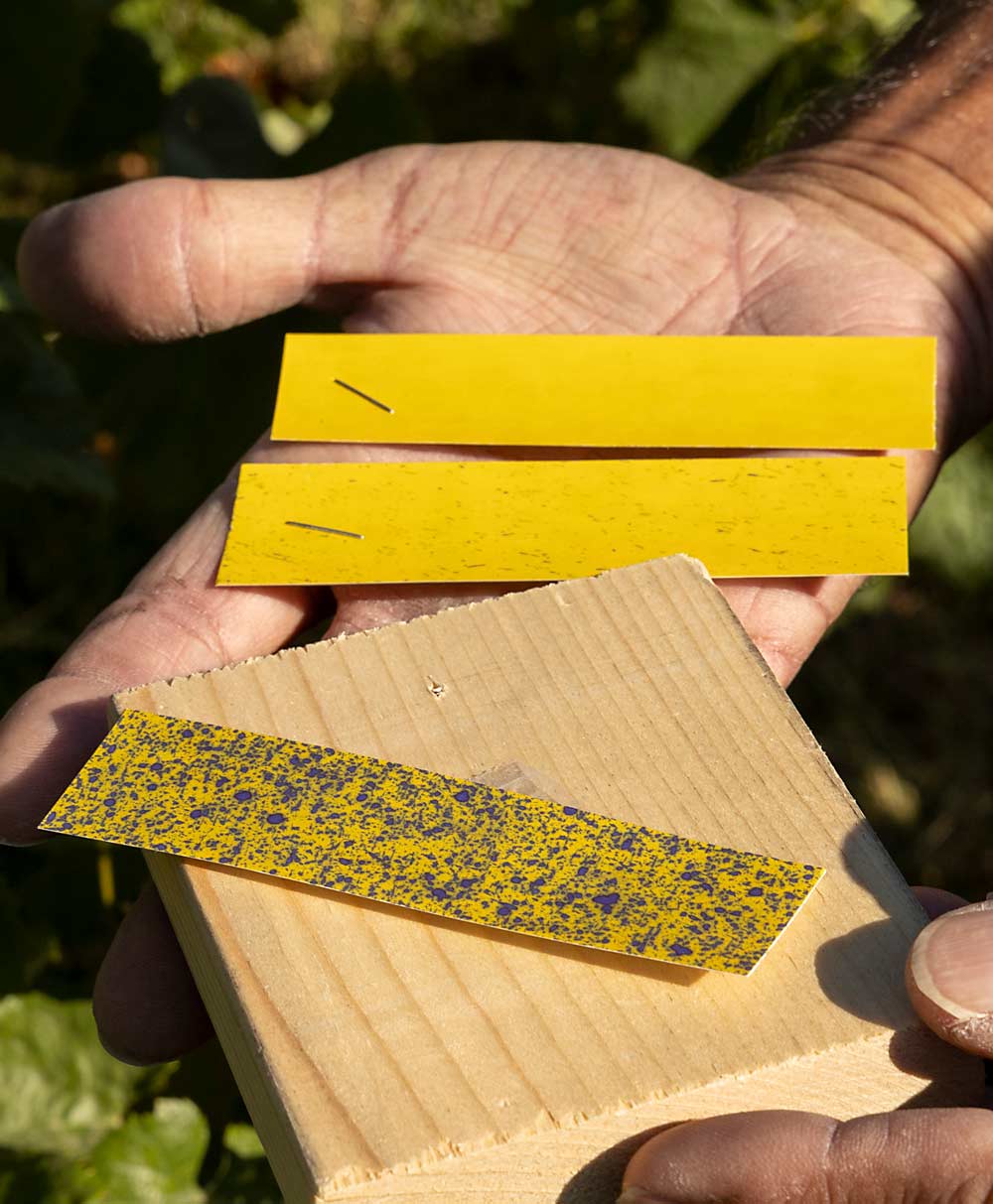
Technological efficiencies
Graduate students in Khot’s lab demonstrated two other pesticide application technologies they have optimized for vineyard use — one commercially available and one still in the research and development phase.
Ramesh Sahni, a recent doctoral graduate, spoke about the Intelligent Spray Control System from Smart Apply, a retrofit kit that enables an airblast sprayer to adapt to the canopy in real time. The technology was developed by the U.S. Department of Agriculture and commercialized several years ago, and the WSU team has been assessing its performance.
“This is the next thing in airblast,” Sahni said. A lidar sensor mounted on the front of the sprayer maps the canopy volume and communicates with solenoid valves that modulate the output of each nozzle.
During the demonstration, along the outside edge of the vineyard block, valves on the fence side went on and off to hit only each fence post — just to show the audience what the technology can do, Sahni said.
In uniform, high-density apple canopies, the technology improves chemical efficiency only by about 10 percent; however, the WSU researchers found that in VSP-trained grapevines, it can offer up to 46 percent chemical savings.
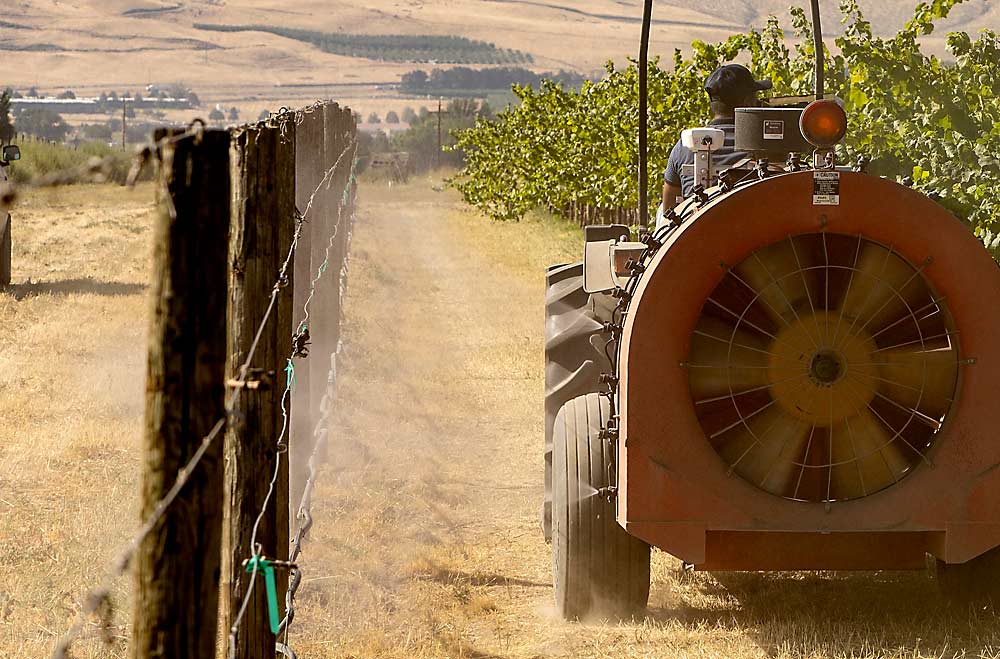
Chemical savings and the elimination of drift were goals of another research project featured at the field day: a sprayer-less method that delivers the pesticides through a system of pressurized lines and emitters.
“We call it driftless spraying,” said doctoral student Datta Bhalekar. In collaboration with Michigan State University, WSU trials to develop and test the Solid Set Canopy Delivery System have shown that the approach produces coverage and biological efficacy results comparable to airblast spraying.
An air compressor pushes the pesticide through delivery lines, running parallel to drip lines under the vines, with three emitters per vine that push the spray up into the canopy. Small reservoirs are placed at intervals to help maintain consistent pressure. It takes less than 10 seconds to complete the application. After that, the system is reversed to return unused product back to the tank. If commercialized, the system could be operated like automated irrigation, firing a series of successive zones.
“Our dream is that you could be spraying from a mobile app,” Sahni said.
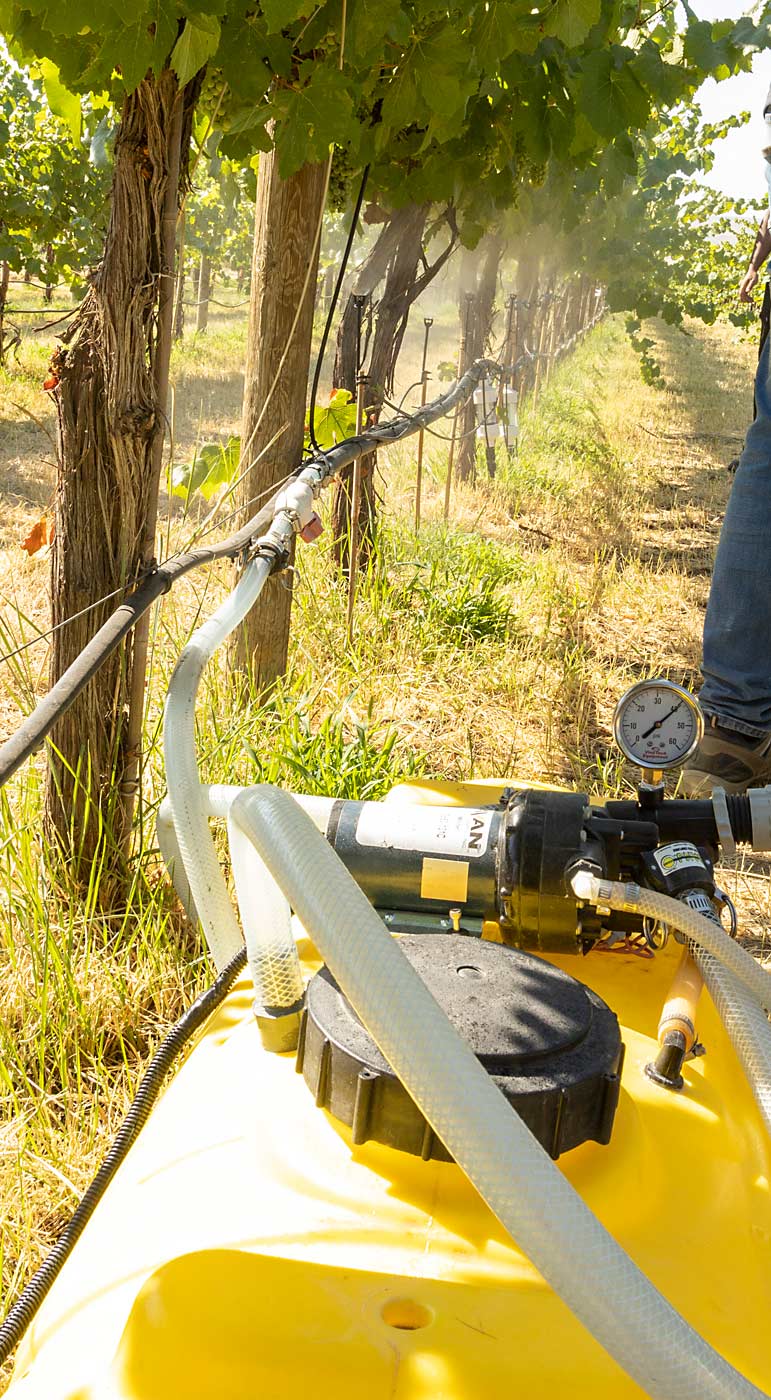
Moving from zero drift to zero residue, graduate student Jake Schrader shared his experiences trying to apply hot horticultural oil, heated to enhance its pest control properties, and to determine if ozonated water could provide mildew and mealybug control. Both pose challenges in that the small spray droplets are unable to pack the promised punch by the time they reach the canopy. The ozonated water loses its concentration almost immediately, and the heated droplets cool quickly.
Another alternative that’s showing more promise is ultraviolet light therapy for powdery mildew. By pulling a box filled with high-intensity UV light bulbs over vine rows in the dark of night — when the fungus can’t repair the cellular damage from light exposure — researchers can deliver meaningful control, said graduate student Lexie McDaniel. Now, they are trying to figure out how growers could best implement the technology in commercial operations.
“Every three days is probably the ticket for controlling mildew, but that runs into labor issues,” she said, in comparison to much longer intervals for traditional fungicides. “It’s promising but needs more integration.”
by Kate Prengaman
Japanese beetle update
The field day also offered an opportunity for Camilo Acosta of the Washington State Department of Agriculture to update Yakima Valley grape growers about the state’s efforts to eradicate Japanese beetles, which were first detected in Grandview in 2020 and then trapped in alarming numbers in that area last year.
Luckily for grape growers, Japanese beetles don’t like grape berries, although the grape leaves are one of over 200 potential hosts. That’s an important distinction, because while the state enacted a quarantine in August, aimed at preventing movement of the beetles from the infested area, it won’t impact the transport of harvested grapes. Corn, hops and yard waste, however, will be subject to transport restrictions, such as on-farm WSDA trapping or treatment prior to transportation, during the adult beetle’s active season, from May to October, Acosta said. Meanwhile, potted plants, noncommercial compost and topsoil pose a concern all year long.
The invasive pest is primarily being trapped in residential areas, where the state treated over 1,000 acres of lawns earlier this year. Acosta said that’s a good start, but his team has only been able to reach about half of the homeowners in the area targeted for the treatment program.
The bad news: A homeowner in Wapato, about 30 miles from the known infestation, reported finding the beetles in his backyard grapes in late July. Traps then set in the area caught over 70 beetles as of the first week of August, Acosta said. Another detection in the opposite direction, in Richland, has not resulted in any additional trap catch.
Those findings show how important the quarantine is to prevent the pest from hitchhiking. “It didn’t fly to Wapato, it didn’t fly to Richland,” Acosta said.
Despite that spread, he remains optimistic about the state’s plan of attack.
“Even though we’ve found these beetles in Wapato, we’re still in eradication mode,” he said.
—K. Prengaman

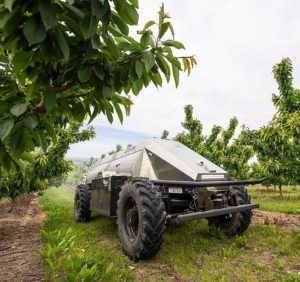
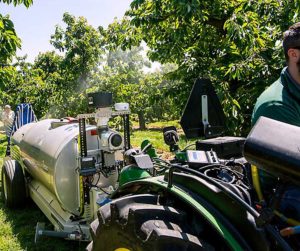
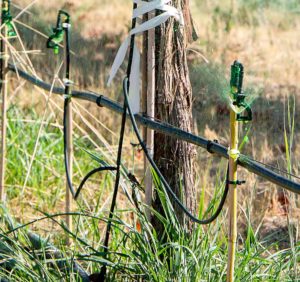
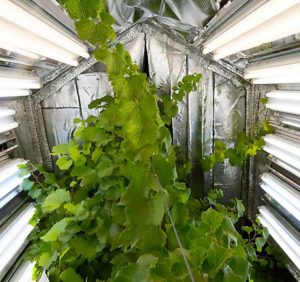
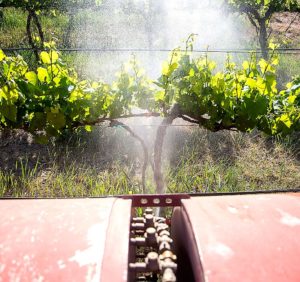
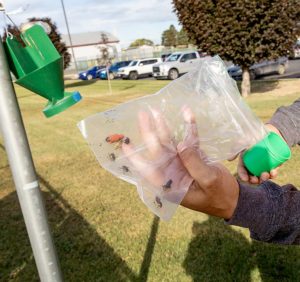





Leave A Comment